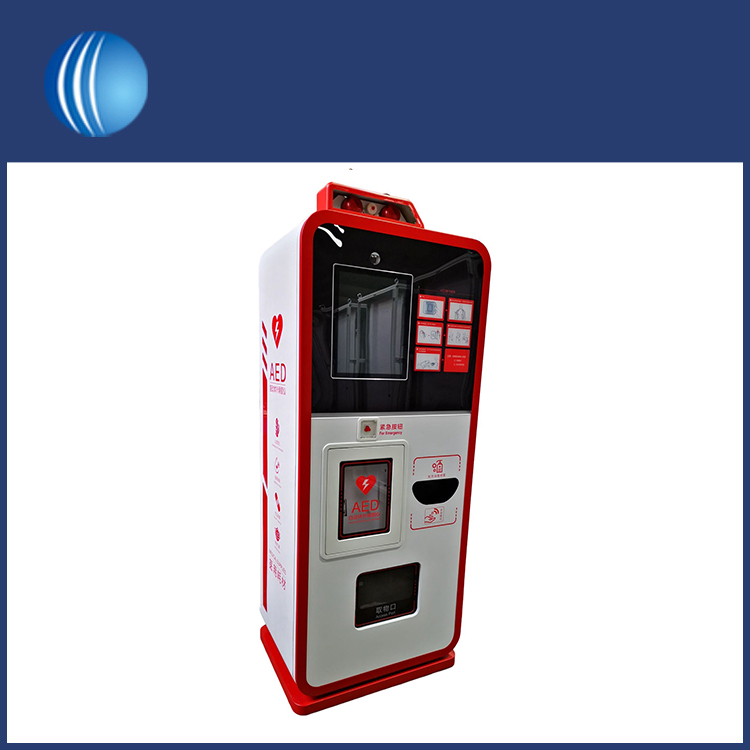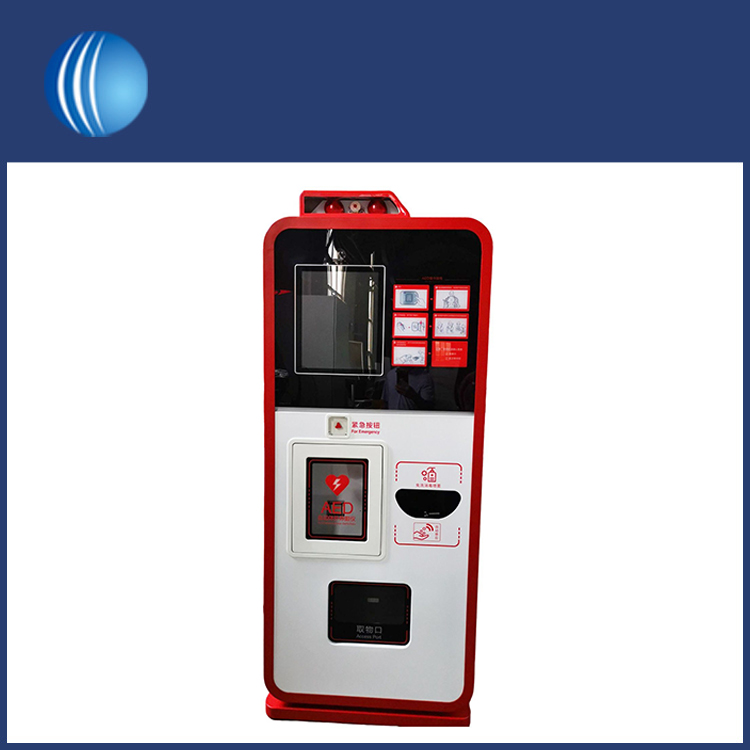
The automatic external defibrillators are designed to be used by individuals with minimal medical training and is often found in public places such as airports, shopping malls, gyms, schools, and other high-traffic areas. SKYT® pays attention to technological innovation and equipment update to meet the ever-changing market demands.
Automatic external defibrillators (AEDS) are a portable medical device designed to deliver an electrical shock to the heart to restore its normal rhythm in cases of sudden cardiac arrest (SCA). SCA occurs when the heart's electrical system malfunctions, causing it to beat irregularly or stop altogether. This can lead to a lack of blood flow to vital organs and, if not treated promptly, can result in death.
Purpose and Function:
Automatic external defibrillators are life-saving devices used to treat sudden cardiac arrest (SCA), a condition where the heart unexpectedly stops pumping blood effectively. During SCA, the heart's electrical system malfunctions, leading to abnormal rhythms such as ventricular fibrillation or ventricular tachycardia. The AED is specifically designed to identify these abnormal rhythms and deliver an electric shock to the heart in an attempt to restore its normal rhythm.

Components of Automatic external defibrillators:
a. Electrode Pads: The AED comes with adhesive electrode pads that contain sensors. These pads are placed on the person's chest, allowing the AED to monitor the heart's electrical activity and determine if defibrillation is required.
b. Control Panel and Display: The Automatic external defibrillator's user interface typically consists of a control panel with buttons and a visual display. The display provides step-by-step instructions to guide the user through the rescue process.
c. Battery and Power Supply: Automatic external defibrillators are powered by batteries or a combination of batteries and AC power sources. The battery ensures that the device remains operational even in locations without a direct power source.
Importance of Early Defibrillation:
Immediate defibrillation is crucial for survival in the event of sudden cardiac arrest. For every minute that passes without defibrillation, the chances of survival decrease by about 7-10%. After 10 minutes, the likelihood of survival is minimal. Therefore, having accessible Automatic external defibrillators in public places increases the likelihood of rapid intervention and saves lives.
Public Access Defibrillation (PAD) Programs:
Many countries and regions have implemented Public Access Defibrillation (PAD) programs to deploy Automatic external defibrillators in high-traffic public areas. These programs aim to train and empower bystanders to use AEDs effectively during emergencies, even if they don't have medical training. Properly implemented PAD programs have been shown to significantly improve survival rates from sudden cardiac arrest.

Automatic external defibrillators Usage and Safety:
AEDs are designed to be user-friendly, enabling individuals with little or no medical training to operate them effectively. When someone collapses and is unresponsive, the following steps should be taken:
a. Call for Help: Before using Automatic external defibrillators, call emergency services (911 or your local emergency number) to get professional medical assistance on the way.
b. Turn on the AED: Power on the AED and follow the voice and visual prompts to proceed.
c. Attach Electrode Pads: Expose the person's chest and attach the electrode pads as directed on the pads or by the Automatic external defibrillator's voice instructions.
d. Analyze the Rhythm: The AED will automatically analyze the person's heart rhythm through the electrode pads. It will determine if a shockable rhythm is present.
e. Shock Delivery: If the Automatic external defibrillators detects a shockable rhythm, it will charge and prompt you to stand clear of the person before delivering the shock.
f. Perform CPR: If advised by the AED, perform cardiopulmonary resuscitation (CPR) after the shock to support blood circulation until professional help arrives.
AED Maintenance and Training:
Regular maintenance and checks are essential to ensure that Automatic external defibrillators are functioning correctly and ready for use. Many AEDs have self-check mechanisms that perform regular tests to confirm proper operation. It is also crucial to train potential users in CPR and AED usage, as training enhances confidence and competence during an emergency.
Legal Considerations:
Various jurisdictions have laws and regulations concerning the deployment and use of Automatic external defibrillators. These laws may govern training requirements, maintenance protocols, and Good Samaritan protections for individuals using AEDs in good faith to assist during emergencies.
In conclusion, automatic external defibrillators are indispensable tools in the chain of survival for sudden cardiac arrest. By providing quick and efficient defibrillation, AEDs significantly increase the chances of survival, making them an essential component of emergency medical response in public spaces and communities.